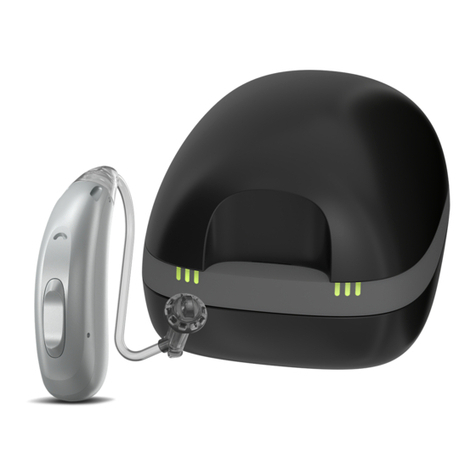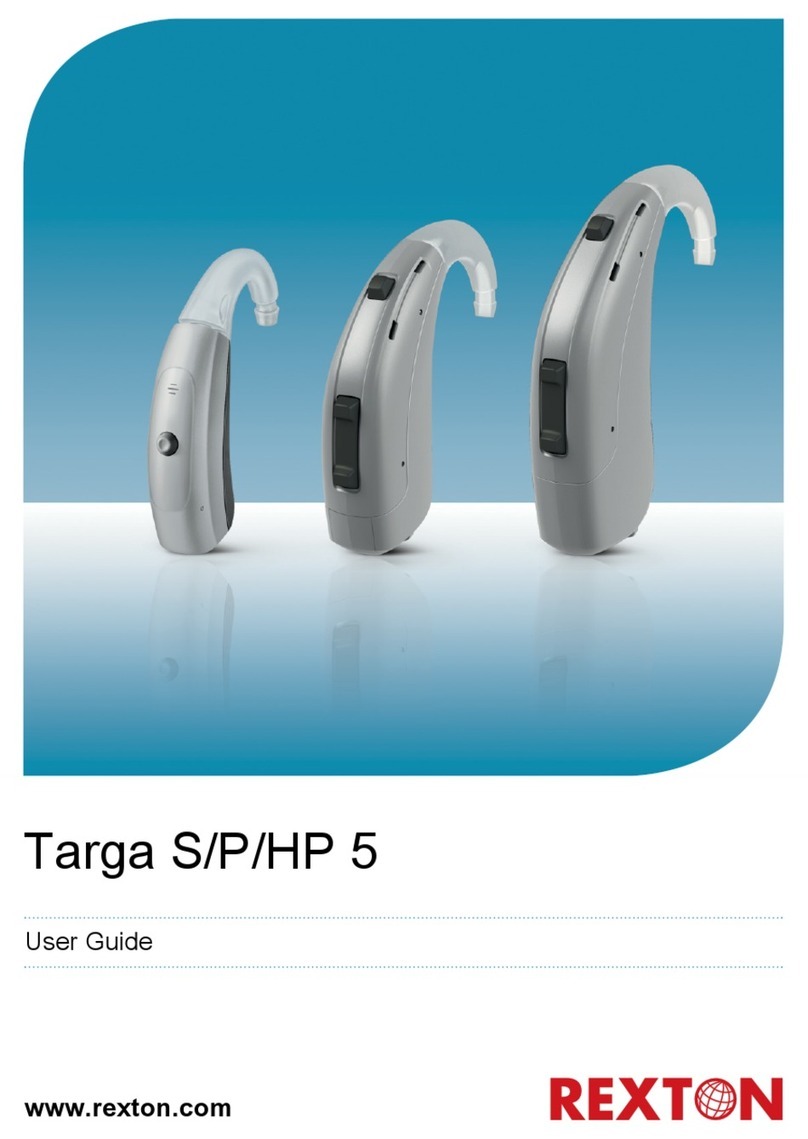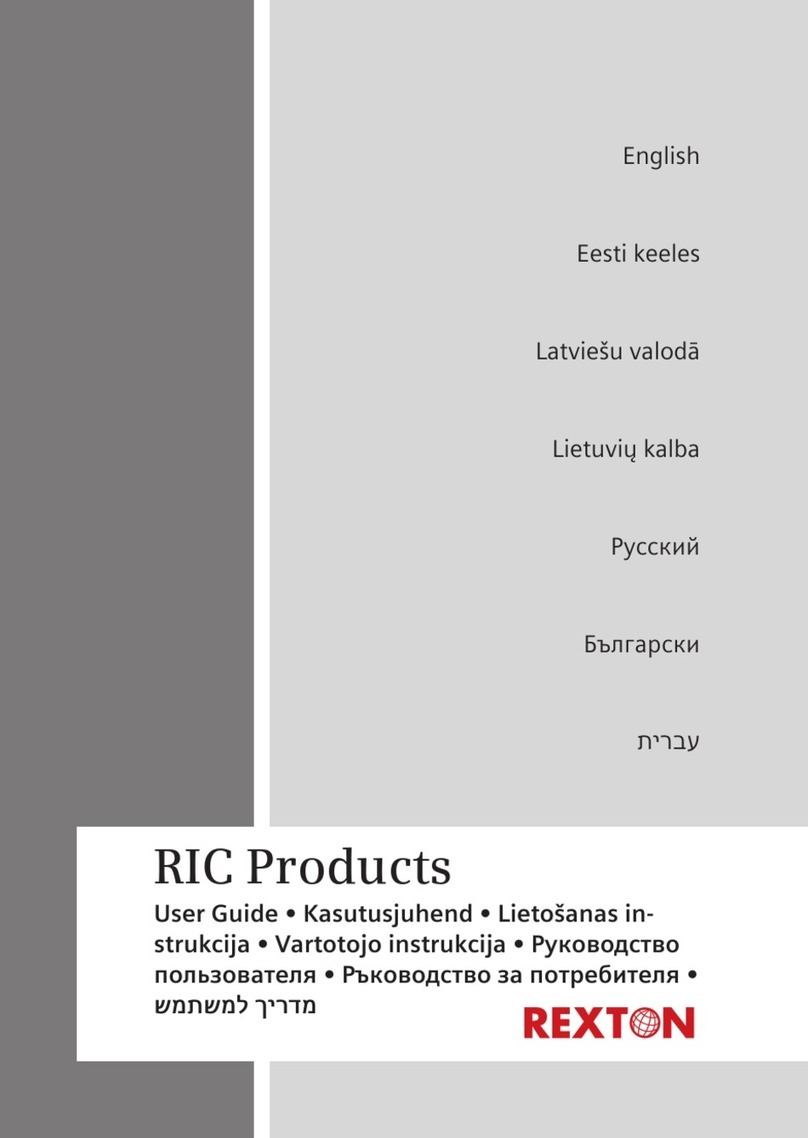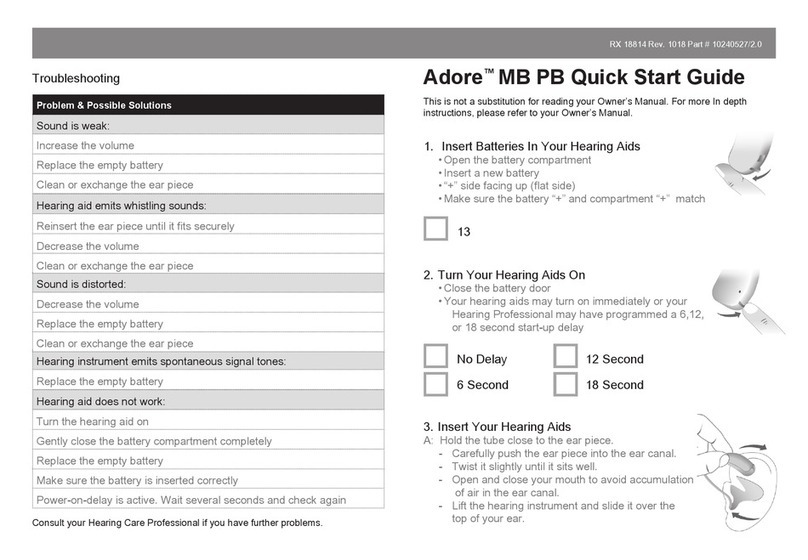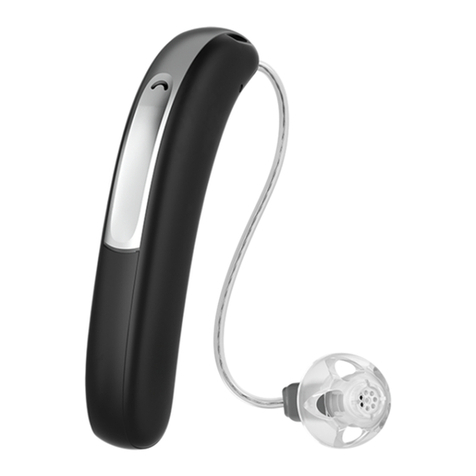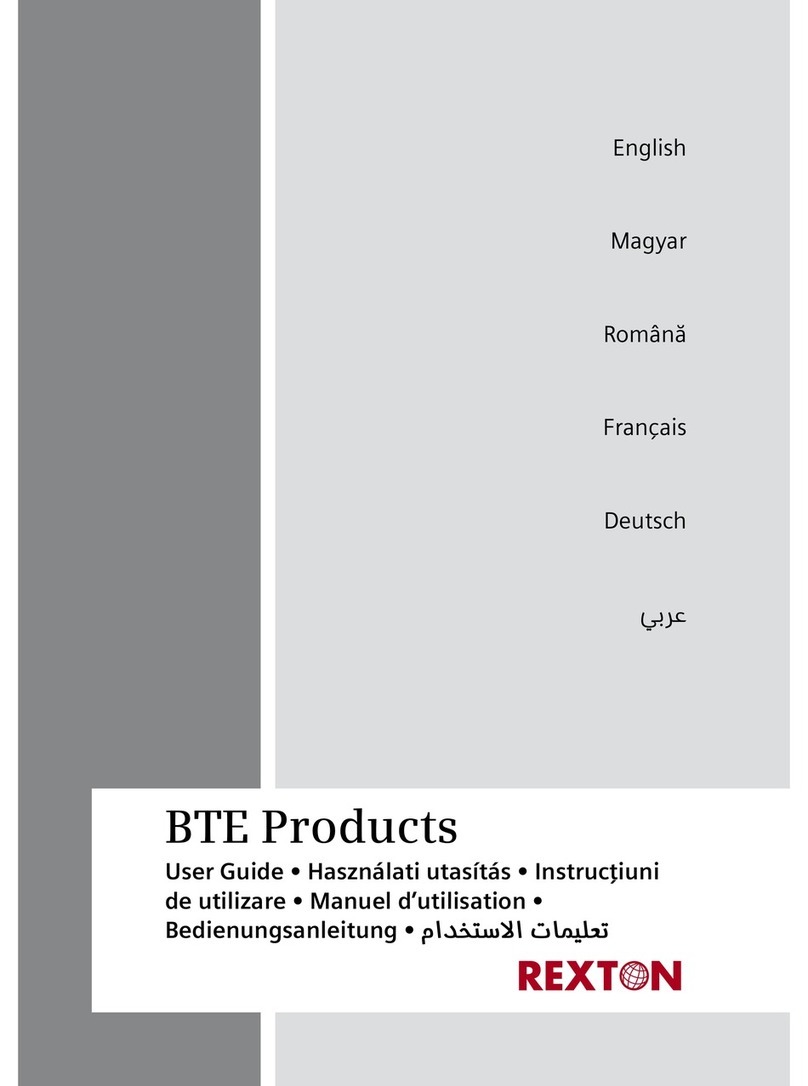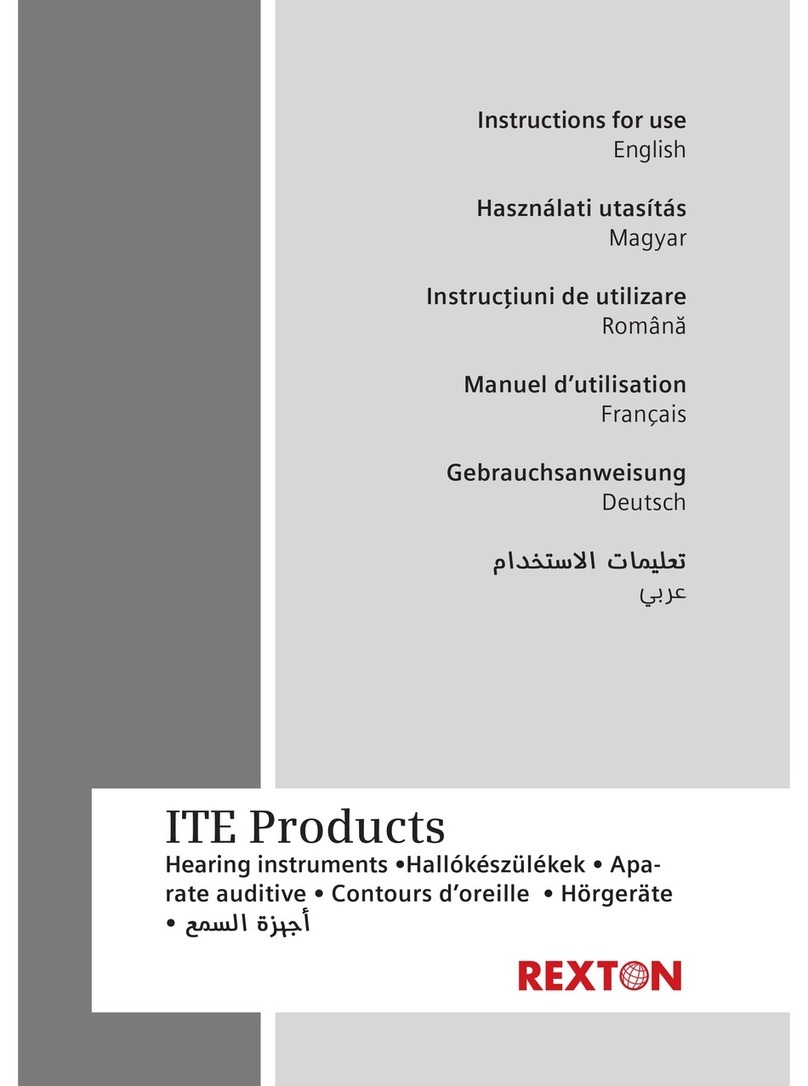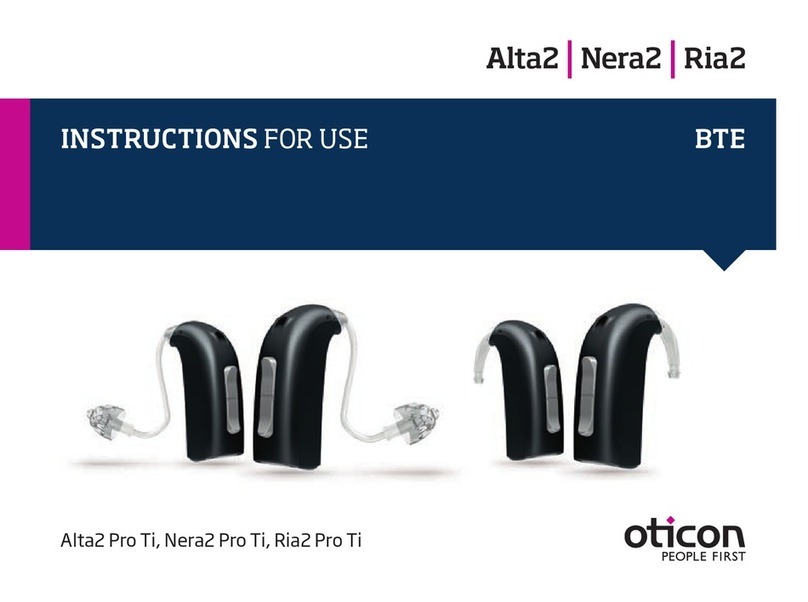
2
TABLE OF CONTENTS
Welcome to Better Hearing ............................................................3
Types of Hearing Instrument Technology ..........................................4
BTE Identification ..........................................................................5
BTE Styles (Standard, Power, High-Power)........................................6
BTE Styles (Free & Open) ...............................................................7
Free/Open Fit Instruments ..............................................................8
Power Instruments........................................................................10
Using your BTE Hearing Instruments...............................................12
Inserting and Removing the Hearing Instrument ...............................15
Hearing Instrument Features.....................................................16-18
Using the Telephone....................................................................19
Direct Audio Input System ............................................................20
Binaural Amplification .................................................................20
Battery Size................................................................................21
Maintenance and Care................................................................21
Listening Tips ..............................................................................22
Tips on Batteries..........................................................................23
Hearing Instrument Care ..............................................................24
Daily Cleaning ...........................................................................25
Hearing Instrument Warnings .......................................................26
Troubleshooting ..........................................................................27
Warranty and Service .................................................................28
Warning to Hearing Health Professionals.......................................29
Important Notice for Prospective Hearing Aid Wearers....................30
Follow-Up Visits...........................................................................31
Owner Information......................................................................32
Wireless Information...............................................................33-34
